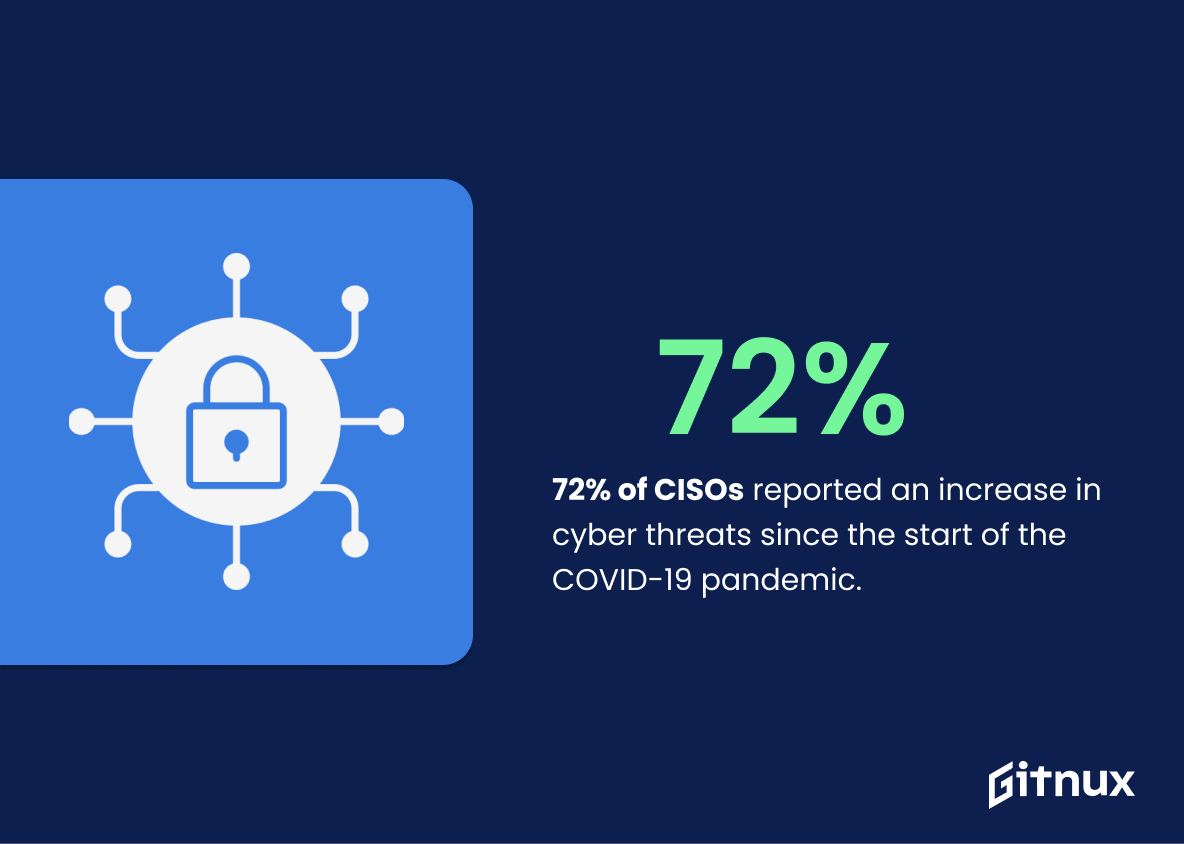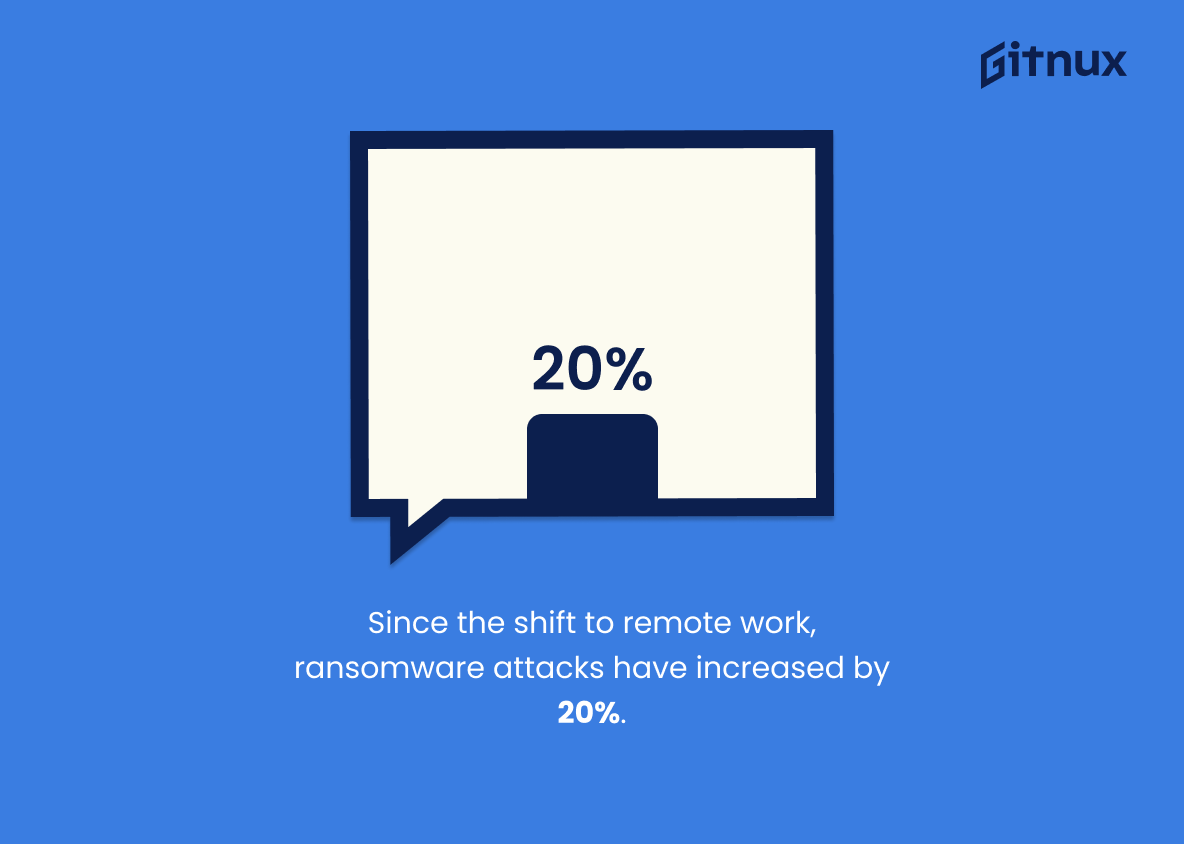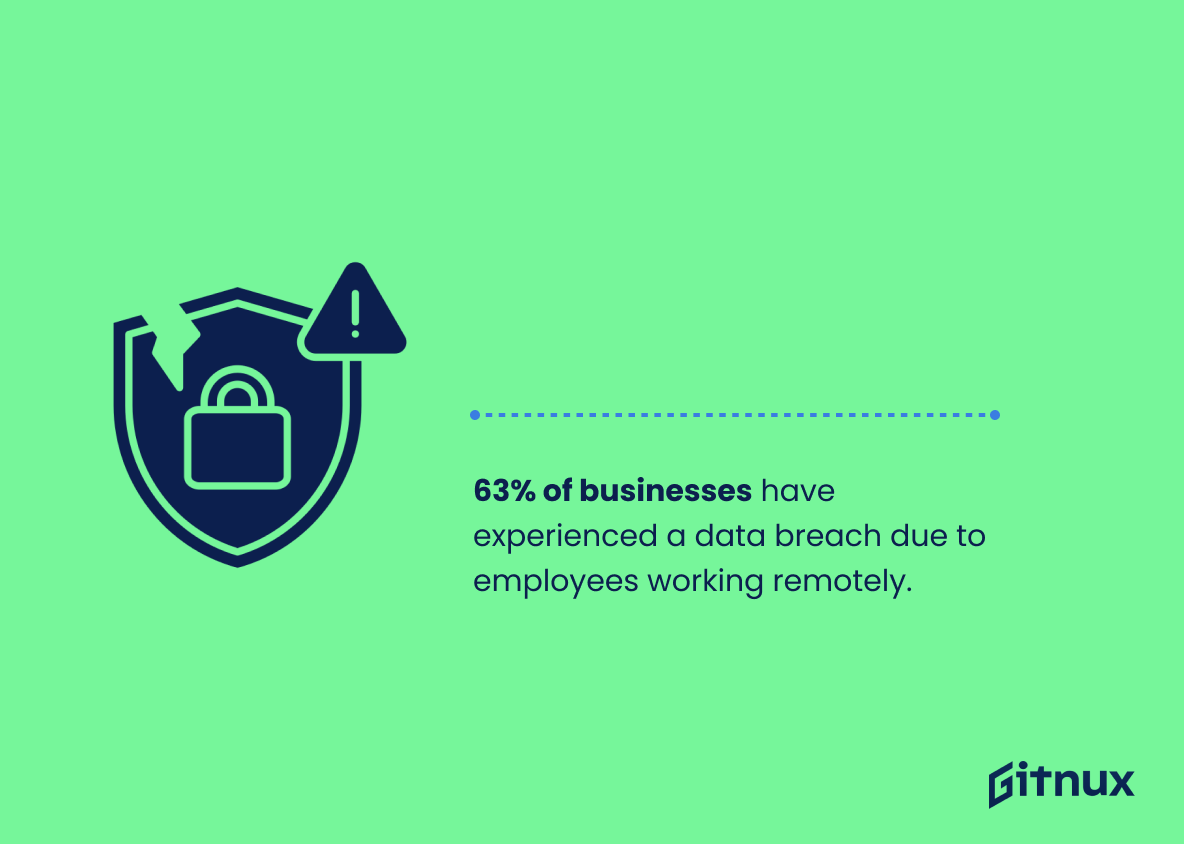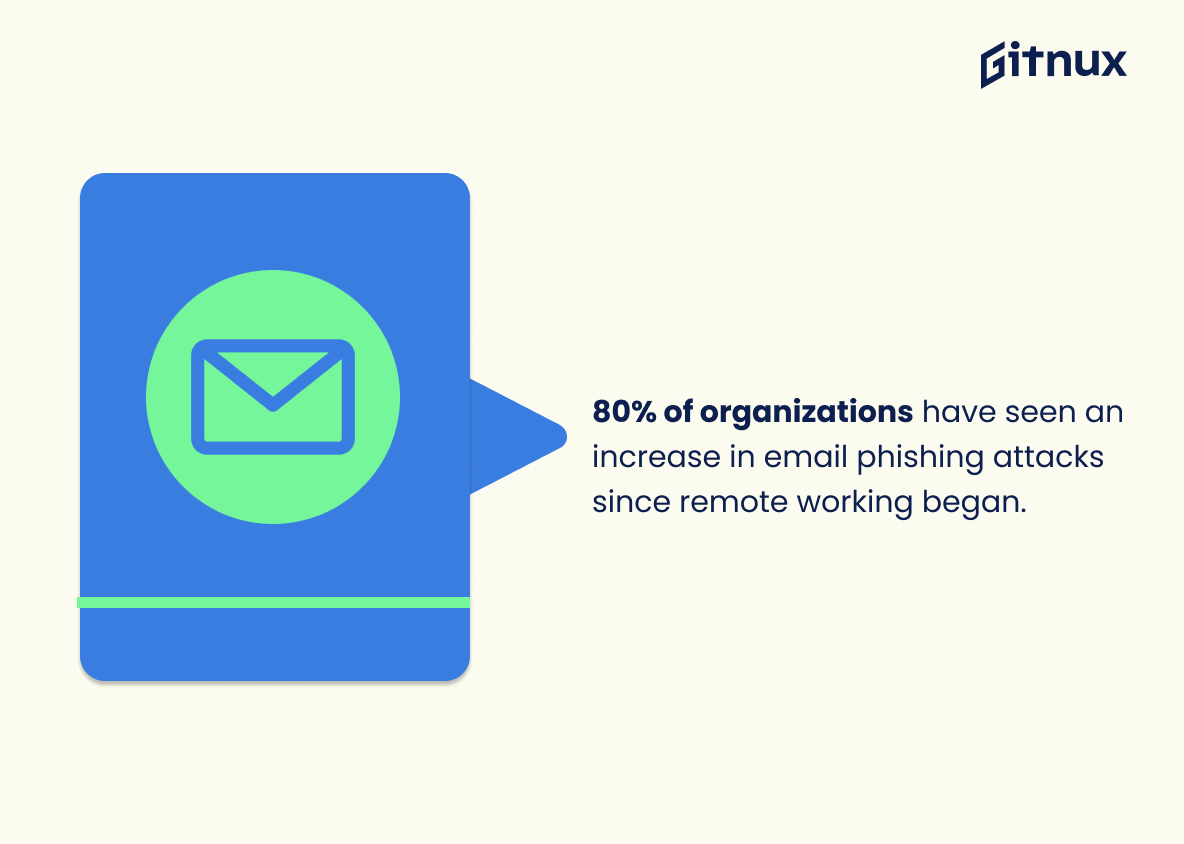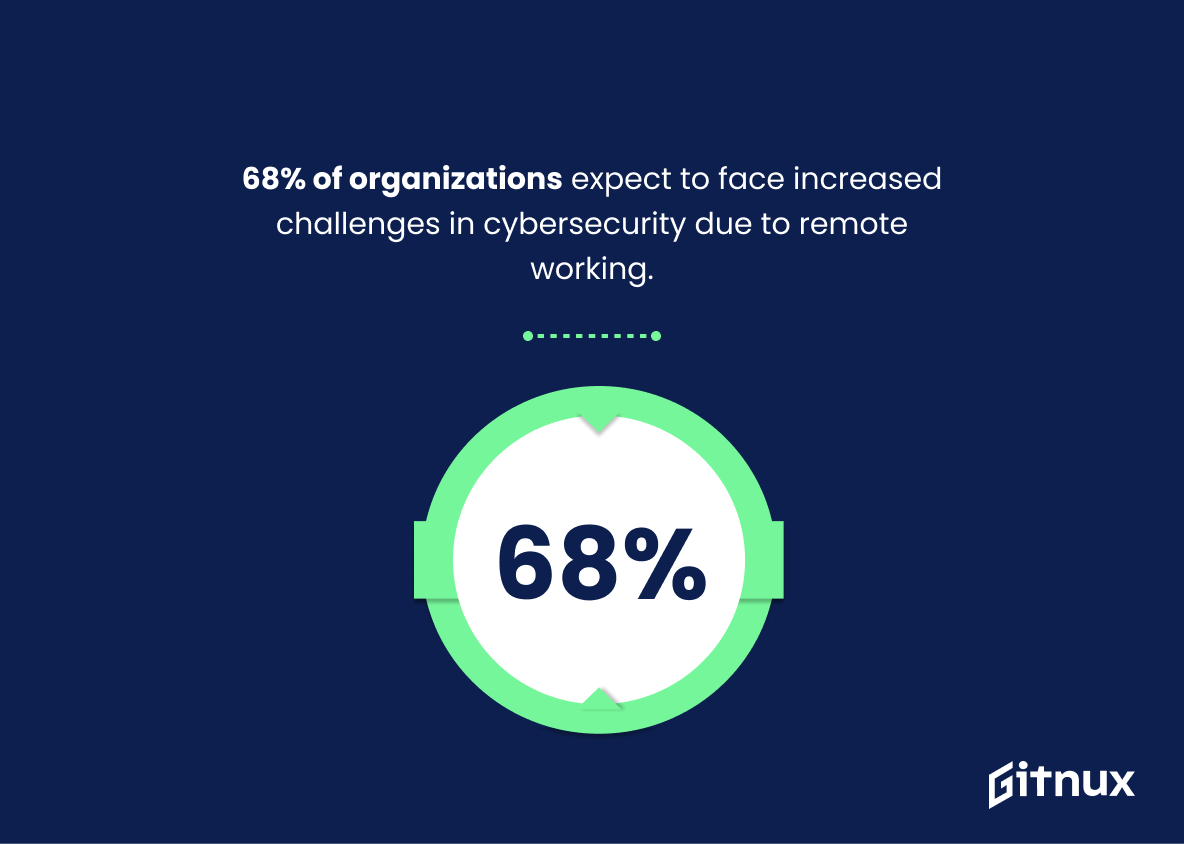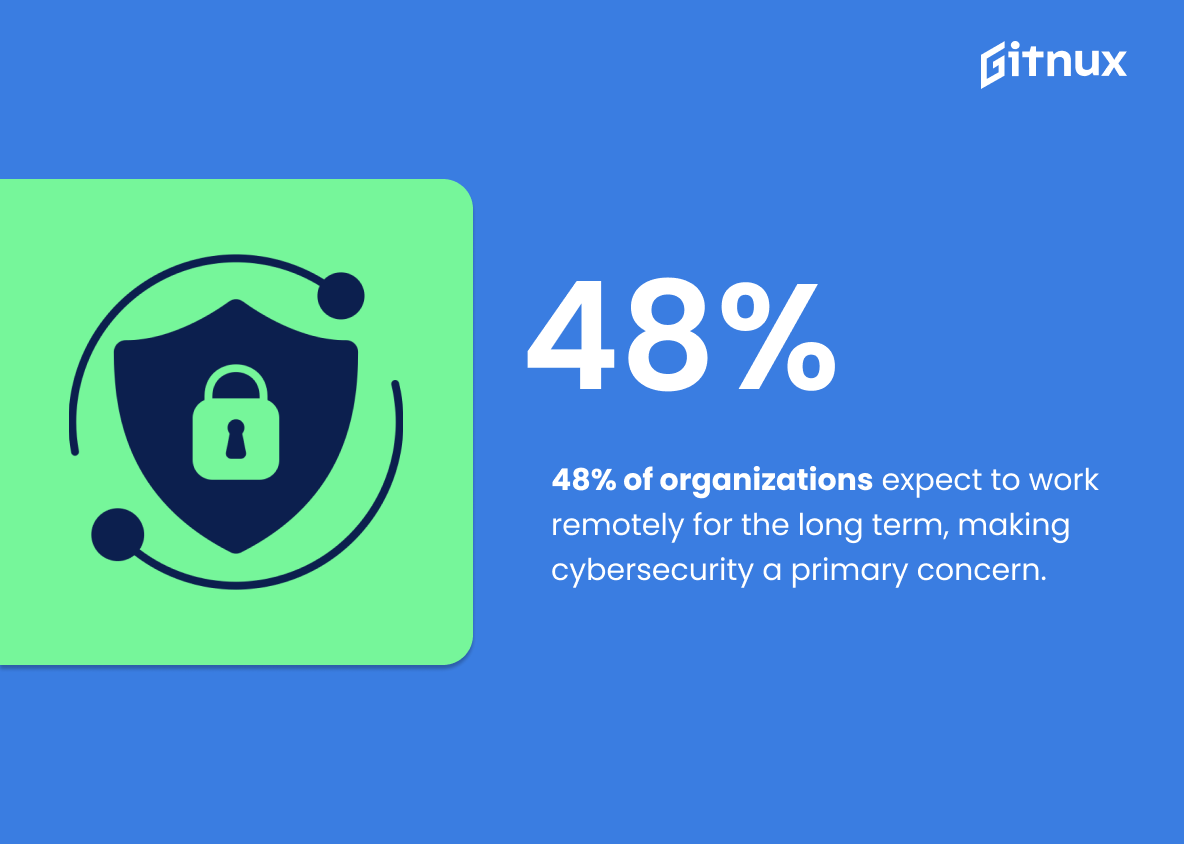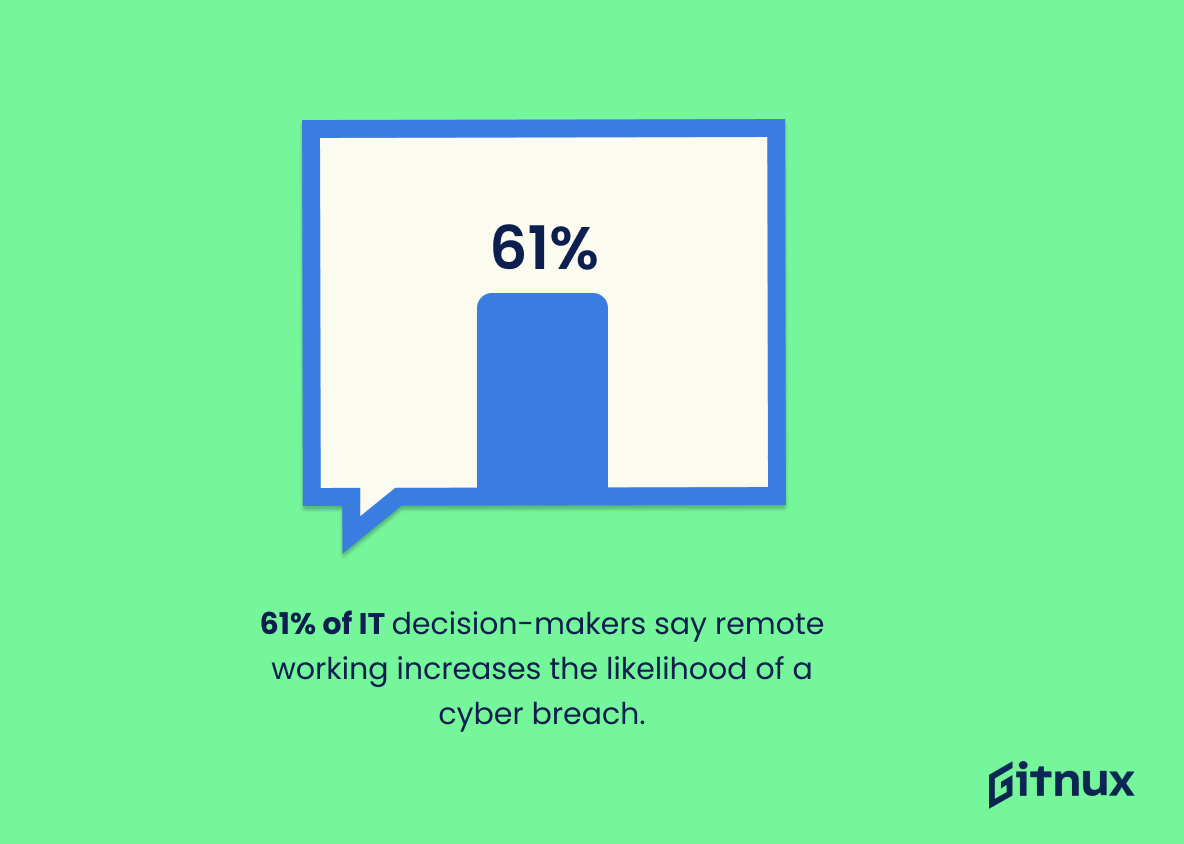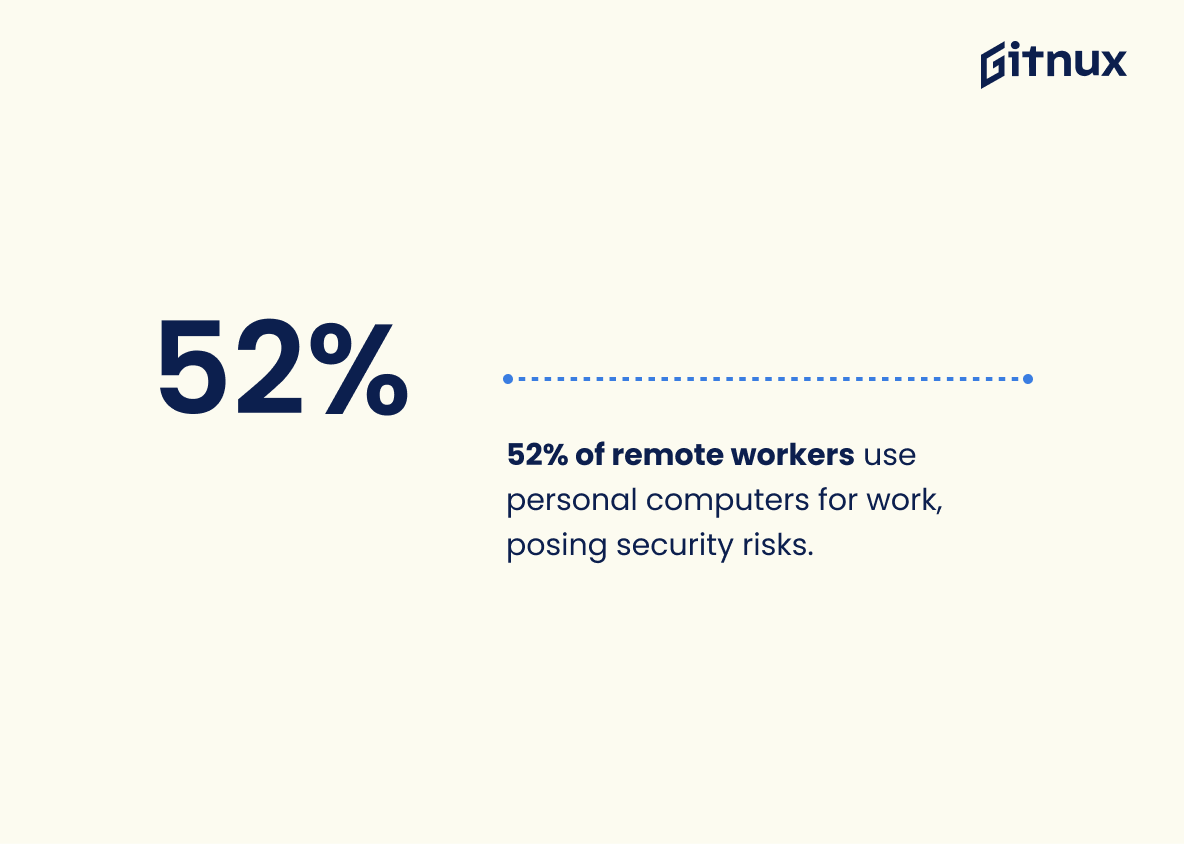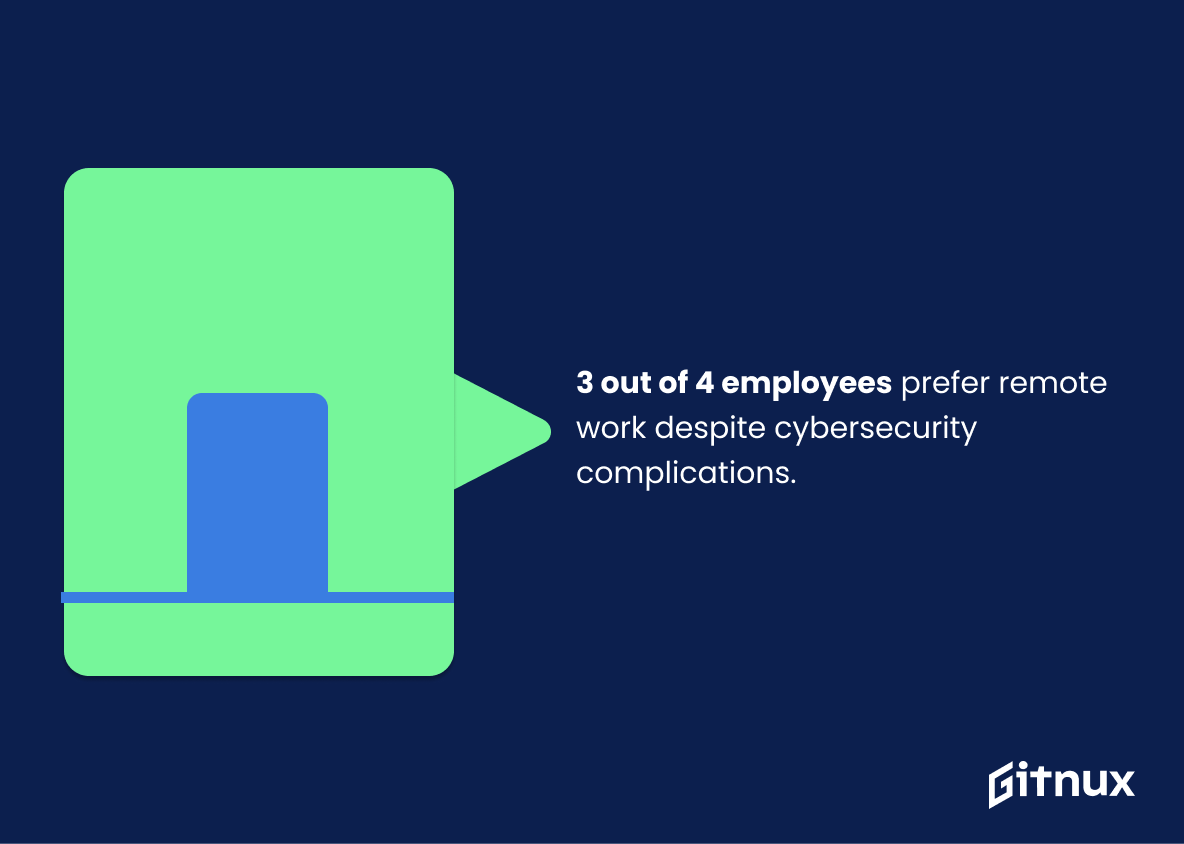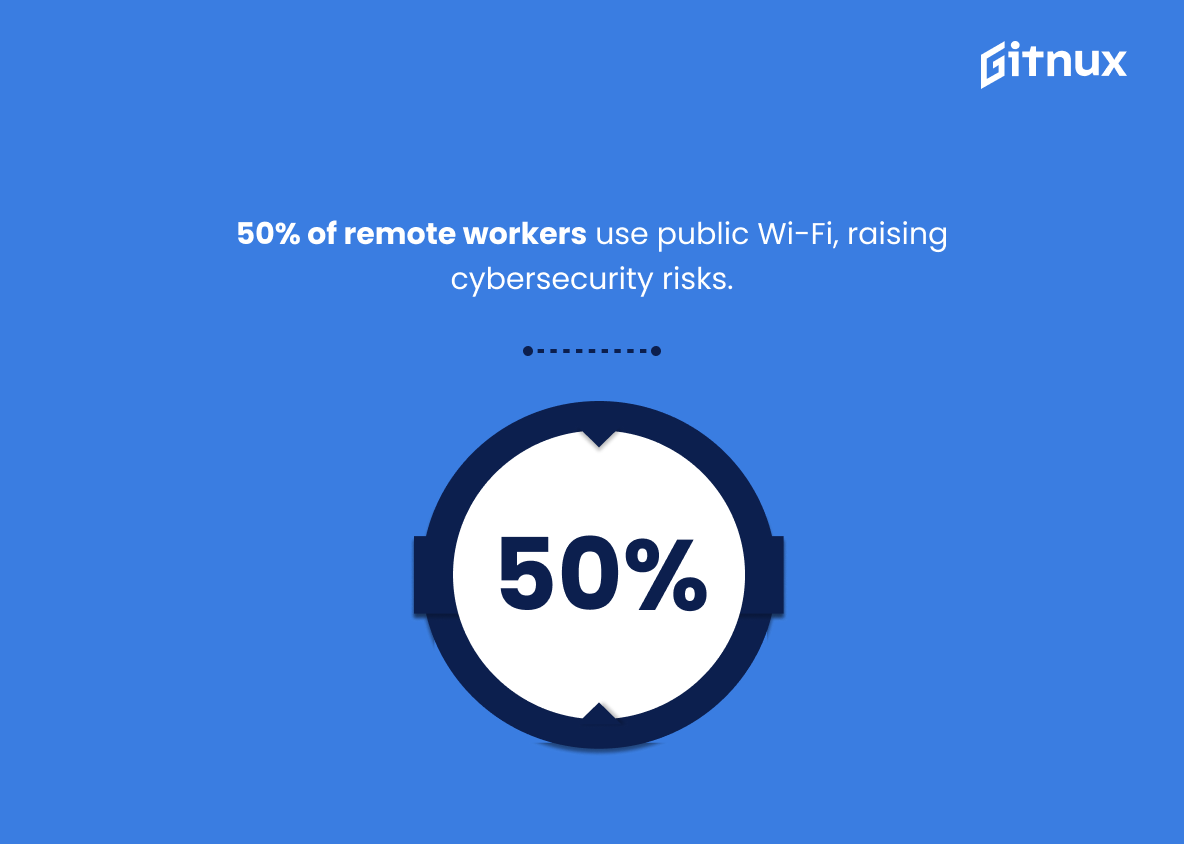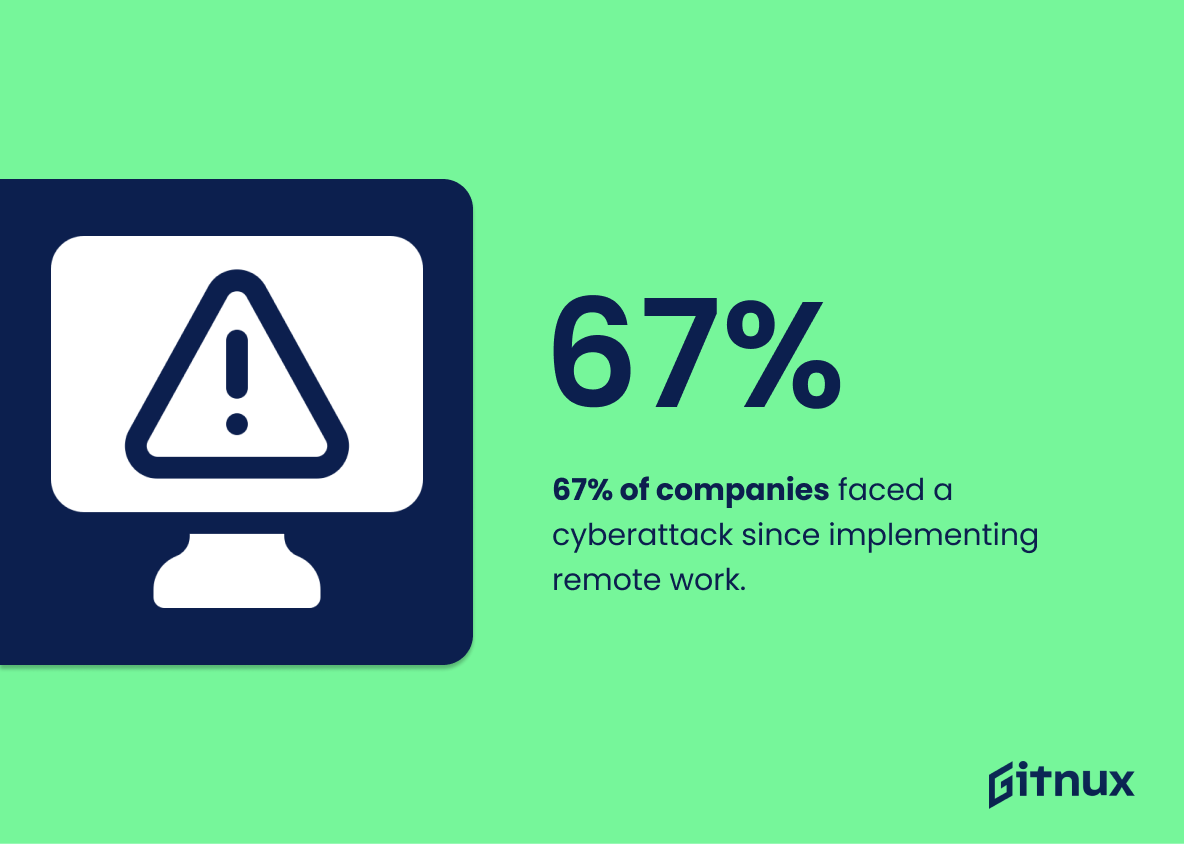Remote work, a necessity in the COVID-19 era, raises unique cybersecurity challenges. According to a Sec Report, 66% of organizations see remote work escalating cybersecurity risks. Software One noted a 94% cybersecurity improvement with cloud technology implementation. Human errors were behind 90% of data breaches, as per Cybint Solutions.
Bitglass revealed that 60% of remote workers use unsecured personal devices to access work networks. The Black Hat USA 2020 Survey found that 72% of CISOs reported an increase in cyber threats since the pandemic began. Ransomware attacks have surged by 20% since the remote work shift, reported IBM Security.
A fifth of remote workers experienced a cybersecurity breach since the pandemic start (Tessian Blog). Also, Statista reported that 63% of businesses suffered a data breach due to remote working. Cybersecurity Risk Radar observed an 80% increase in email phishing attacks since remote working started.
MalwareBytes White Papers found that 68% of organizations anticipate tougher cybersecurity challenges due to remote working. McAfee blogs suggested that 48% of organizations are expected to continue remote work long term, making cybersecurity a primary concern. According to Wandera, 46% of remote workers accidentally leaked sensitive company information.
Now, let’s delve deeper into these pivotal statistics about remote work cybersecurity.
Remote Work Cybersecurity Statistics Overview
72% of CISOs reported an increase in cyber threats since the start of the COVID-19 pandemic.
This statistic is a stark reminder of the heightened risk of cyber threats that have come with the shift to remote work due to the COVID-19 pandemic. With more people working from home, the potential for malicious actors to exploit vulnerabilities in remote networks has increased significantly. This statistic serves as a warning to organizations to take the necessary steps to protect their data and systems from cyber threats.
Since the shift to remote work, ransomware attacks have increased by 20%.
The data underscores the critical role of cybersecurity in remote work settings. Organizations must be proactive in safeguarding data and systems from ransomware and other threats. Recognizing the heightened risk allows for necessary security measures in remote work environments.
63% of businesses have experienced a data breach due to employees working remotely.
The data emphasizes how crucial cybersecurity is in remote work scenarios. Businesses should implement extra measures to secure data and systems with remote employees. Vigilance is key, ensuring that remote staff adhere to cybersecurity best practices.
80% of organizations have seen an increase in email phishing attacks since remote working began.
The data stresses the urgency of cybersecurity in remote work contexts. Organizations and employees both need to be proactive and vigilant in protecting data and systems. The information serves as a warning, promoting awareness and action to mitigate remote work risks.
68% of organizations expect to face increased challenges in cybersecurity due to remote working.
Remote work elevates the risk of cyberattacks for organizations. A distributed workforce makes data and network protection more challenging. It underscores the urgency for companies to actively update and fortify their cybersecurity measures.
48% of organizations expect to work remotely for the long term, making cybersecurity a primary concern.
This statistic is a stark reminder of the importance of cybersecurity in the era of remote work. With nearly half of organizations expecting to work remotely for the long term, it is essential that they take the necessary steps to protect their data and systems from malicious actors. This statistic highlights the need for organizations to prioritize cybersecurity and ensure that their remote work infrastructure is secure.
61% of IT decision-makers say remote working increases the likelihood of a cyber breach.
This statistic is a stark reminder of the potential risks associated with remote working. It highlights the need for organizations to take proactive steps to ensure their data and systems are secure when employees are working remotely. This statistic is a call to action for organizations to prioritize cybersecurity and ensure their remote working policies are up to date and effective.
52% of remote workers reported using their own personal computers for work, which poses significant security risks.
This statistic is a stark reminder of the potential security risks associated with remote work. With over half of remote workers using their own personal computers for work, it is clear that there is a need for increased awareness and implementation of cybersecurity measures to protect both the workers and the companies they work for.
3 out of 4 employees prefer remote work even though it complicates their company’s cybersecurity efforts.
This statistic is a powerful indicator of the current state of remote work, and its implications for cybersecurity. It shows that despite the challenges posed by remote work, the majority of employees still prefer it. This highlights the need for companies to prioritize cybersecurity measures to protect their remote workforce. It also serves as a reminder that companies must be proactive in addressing the cybersecurity risks associated with remote work.
50% of remote workers use public Wi-Fi networks, potentially increasing the risk of cybersecurity threats.
This statistic is a stark reminder of the potential risks associated with remote work. With half of remote workers using public Wi-Fi networks, it is clear that there is a heightened risk of cybersecurity threats. This statistic serves as a warning to employers and employees alike to take the necessary steps to protect their data and systems from malicious actors.
67% of companies faced a cyberattack since implementing remote work.
This statistic is a stark reminder of the importance of cybersecurity when it comes to remote work. It highlights the fact that even with the implementation of remote work, companies are still vulnerable to cyberattacks. This statistic serves as a warning to companies to take the necessary steps to protect their data and systems from malicious actors.
Conclusion
Cybersecurity risks have grown with remote work. 66% of organizations believe remote work heightens these risks. Yet, 94% note improved cybersecurity with cloud technology. Human mistakes lead to 90% of data breaches, and 60% of remote workers use unsecured devices.
The COVID-19 pandemic saw a 72% spike in cyber threats and a 20% increase in ransomware attacks. Data points like 20%, 63%, 80%, 68%, 48%, 46%, 61%, 52%, and 50% highlight remote work security issues.
Despite the risks, three out of four employees favor remote work. Cyber incidents rose by 53%, leading 97% of firms to add new security measures. 50% of remote workers connect via public Wi-Fi, and 67% of businesses faced attacks after starting remote work.
In 2020, ransomware attack expenses increased by 60%. These figures stress the importance of secure systems for remote work. We’ll next delve into key data on remote work cybersecurity.
References
0. – https://www.www.softwareone.com
1. – https://www.www.bitglass.com
2. – https://www.www.malwarebytes.com
3. – https://www.www.sans.org
4. – https://www.www.mcafee.com
5. – https://www.resources.infosecinstitute.com
6. – https://www.www.ibm.com
7. – https://www.www.statista.com
8. – https://www.www.zdnet.com
9. – https://www.www.f-secure.com
10. – https://www.www.blackhat.com
11. – https://www.www.weforum.org
ZipDo, cited June 2023: Remote Work Cybersecurity Statistics
